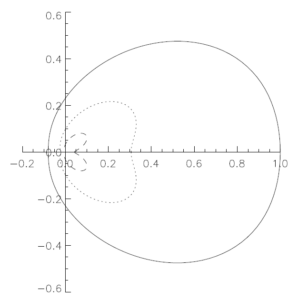Solar flares are the most powerful explosions in the solar system, releasing 1032 – 1033 ergs over timescales of only 102 –103 seconds, with a large fraction of this energy going into the acceleration of electrons and ions (see e.g. Lin and Hudson, 1976; Benz, 2008). The energy is initially stored in the magnetic fields of the corona, but details of the mechanisms that transfer this energy from magnetic to kinetic are not understood. Hard X-rays (HXRs) are the most direct available diagnostic of solar flare electron acceleration, since they are emitted by energetic electrons via bremsstrahlung collisions with ambient ions. HXRs are emitted from the chromospheric footpoints of flare loops and from the corona, including the electron acceleration region itself. The most sensitive solar HXR imager to date was the Reuven Ramaty High Energy Solar Spectroscopic Imager (RHESSI: Lin et al., 2002). RHESSI used rotation modulation collimators (RMCs) and bulk germanium detectors to perform imaging spectroscopy from 3 keV to 17 MeV, encompassing the thermal and nonthermal electron regimes, with angular and energy resolutions of 2.3” (∼1670 km on the Sun) and 1 keV, respectively, for HXRs. In its 16 years of operation, RHESSI vastly improved our understanding of flare particle acceleration; for details see the dedicated July 2011 issue of Space Science Reviews (Volume 159, 2011). For example, through characterization of the nonthermal electron spectrum, RHESSI has determined that a large fraction (±10-50%) of flare energy release goes into accelerating electrons (e.g., Emslie et al., 2012). The bremsstrahlung radiation spectrum of accelerated electrons in a target area is strongly dependent on the angular and energy distributions of the energetic particles. Knowledge of both, as they propagate within the solar material, is necessary for understanding the acceleration and transport of particles in flaring regions. Measurement of the angular distribution of energetic electrons use the fact that an anisotropic distribution of bremsstrahlung-producing electrons will generate radiation that is both polarized and anisotropic.

Efforts to measure electron beaming have therefore concentrated on studies of the hard X-ray continuum emission, by looking at either the directivity or the polarization of the emitted radiation. Theoretical studies have considered the evolution of the electron pitch-angle distribution as the particles are transported along magnetic field lines (e.g. Brown, 1972; Leach and Petrosian, 1981; McTiernan and Petrosian, 1990b,a). It is generally expected that, even if the particles are strongly beamed when injected, the net effect of the particle transport through the atmosphere will be to broaden the angular distribution (Holman et al., 2011). Ideally, the measurements of the electron angular distribution should therefore be performed as a function of both time and space. No such measurements are available as yet. However, those measurements that are available (as discussed below) already indicate some evidence for electron beaming.
